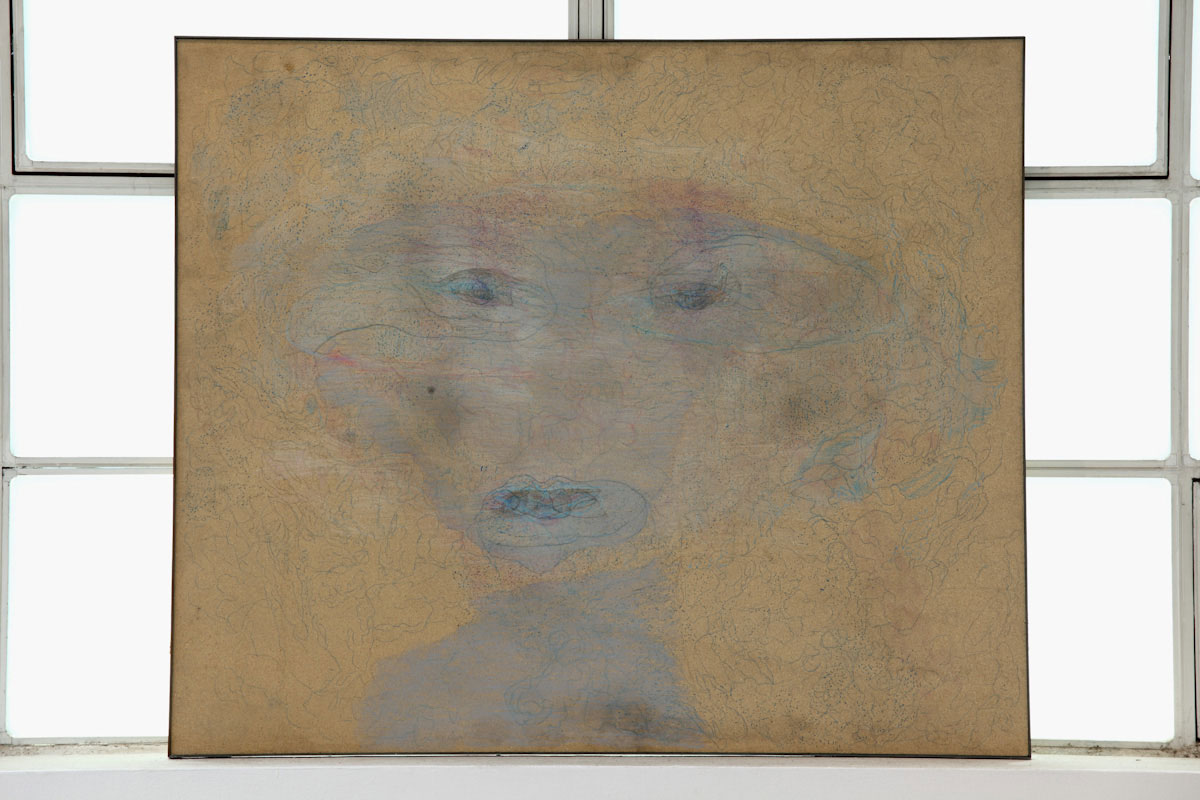ART CITIES: N.York-Marisa Merz
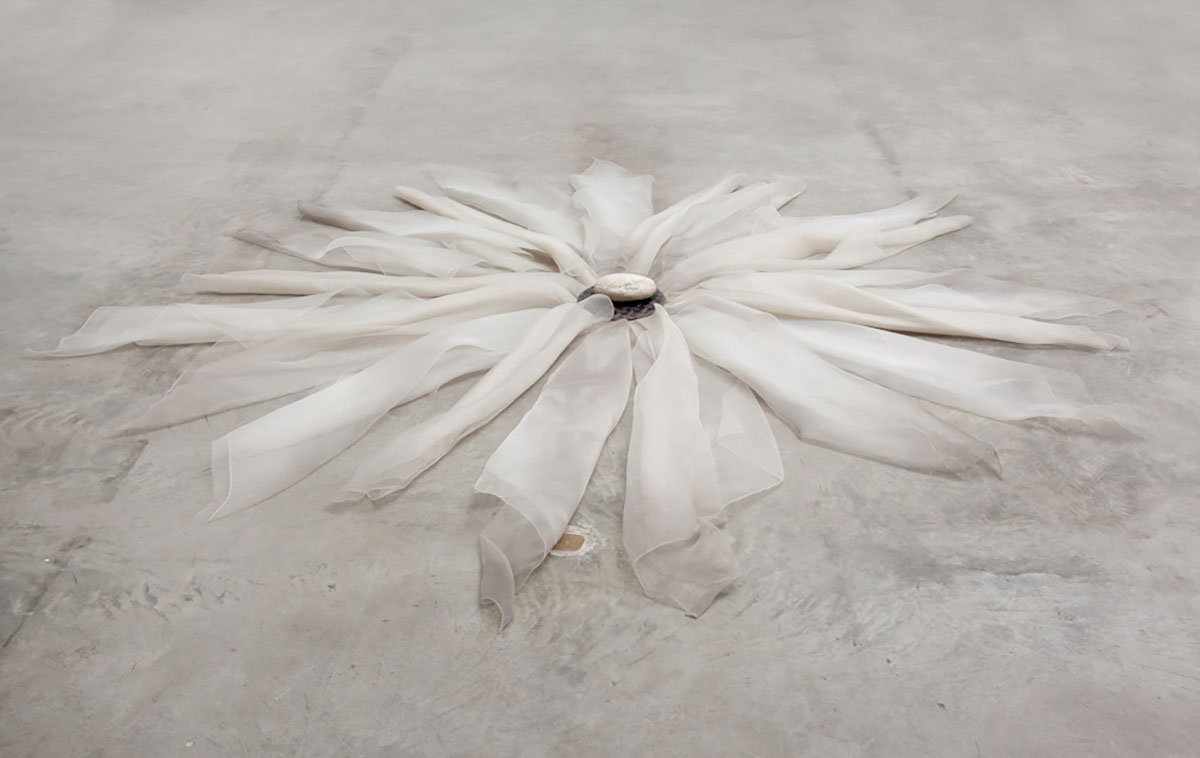 Marisa Merz is the only woman artist associated with Are Povera. During her long marriage to Mario Merz she resolutely managed her own career while rarely leaving his side and, occasionally, operating as his anonymous collaborator. Still, it is her tenacious personal vision that has resulted in a body of work that is both mystic and domestic.
Marisa Merz is the only woman artist associated with Are Povera. During her long marriage to Mario Merz she resolutely managed her own career while rarely leaving his side and, occasionally, operating as his anonymous collaborator. Still, it is her tenacious personal vision that has resulted in a body of work that is both mystic and domestic.
By Efi Michalarou
Photo: Gladstone Gallery Archive
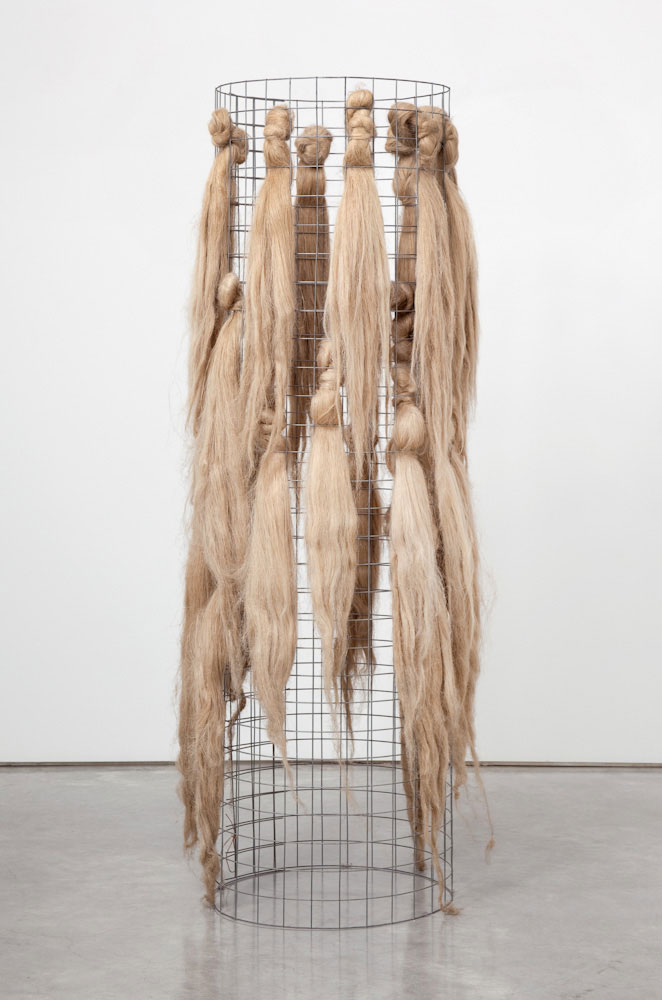
An exhibition that brings together significant works by Marisa Merz is on show in New York. Her artistic debut was distinctly different from the rest of the Arte Povera cohort in that it did not come in an essay or exhibition organized by curator Germano Celant or hosted by Gian Enzo Sperone’s gallery, rather it can be traced to when she invited friends to see the pendulous sewn-aluminum forms known as “Living Sculpture” (1966) that had been steadily taking over the Turin home/studio she shared with her husband Mario Merz, and their young daughter. That she understood raising a child and being an artist part of the same lived experience is evidenced in several works, such as the swing she built in their apartment and exhibited as a sculpture. Merz’s artworks graced Italian art galleries soon enough, as well as Turin’s experimental Piper Pluri Club, and she was invited to crucial international exhibitions of the era, where she contributed conceptual works and delicately balanced installations of organic and inorganic materials: knit copper and nylon threads, wax casts, or vessels filled with salt. In the early 1980s she began to make and exhibit the figurative drawings and small ceramic sculptures that would occupy so much of the subsequent four decades. This simple chronology belies a more complex story, one in which Merz challenged the boundaries of how historians assess a career, how galleries market a body of work, and how viewers approach an artwork. As Merz was reticent to date or even title most of her works, each remained theoretically open to the possibility of being changed, renewed, or subsumed into another project throughout her life. Merz’s works typify one of the most salient features of the art produced by her Torinese colleagues (Giovanni Anselmo, Piero Gilardi, Mario Merz, Giuseppe Penone, Michelangelo Pistoletto, GIlberto Zorio) in the late 1960s: the work of art serves as a catalyst for a greater understanding of the nature of being through corporeal, multi-sensory experience. Beyond this, her mostly untitled drawings refuse the kind of particularity that would pin down and ultimately limit our readings of them. When fortunate enough to see them in groups, we see resonances among them, hints of recurrent figures but without any identifying subjectivity. From a feminist perspective, the refusal of specificity bears witness to the intersectionality of female experience as overlapping, multiple, diachronic identities clash and meld. Identity cannot be fixed any more than the artwork can result in a single message. Rather, the encounter with the image and its constituent materials in the present time of the viewer is what gives rise to meaning. In this refusal to fix her works with words or dates, Merz rejected the measures of artistic production that would otherwise seek to quantify, in industrial-capitalist terms, both her own labor and the experience of the viewer. Merz’s gold-covered clay sculpture (Untitled, undated): barely larger than a closed fist, it bears three carved mandorla, or almond-shaped depressions, through which two eyes and a mouth may be read. A figure starts to emerge from the depths of the solid form, and the viewer begins to feel protective of this diminutive object, this coming-into-being. A large, untitled work on paper enacts this searching in-betweenness in its image and structure. A face materializes on the upper right, sketched in cerulean blue on a shimmering gold surface that suggests the sun in the sky as much as a figure on a ground. By staying with such works, and investigating the materials and imagery that reoccur in Merz’s practice, we can begin to understand the power of her dialogical approach. Beyond the strictures imposed by language, chronological history, and artistic disciplines, the openness of Marisa Merz’s works force us to stay in the moment, in the conversation. They ask us to be present in the experience of an object, our bodies, a space, the world.
Photo: Marisa Merz, Untitled, 1979, Nylon lint, iron and stone, 6 x 114 1/4 x 114 1/4 inches (15 x 290 x 290 cm), © Marisa Merz, Courtesy the artist and Gladstone Gallery
Info: Gladstone Gallery, 130 East 64th Street, New York, NY, USA, Duration: 29/4-17/6/2023, Days & Hours: Tue-Sat 10:00-18:00, www.gladstonegallery.com/
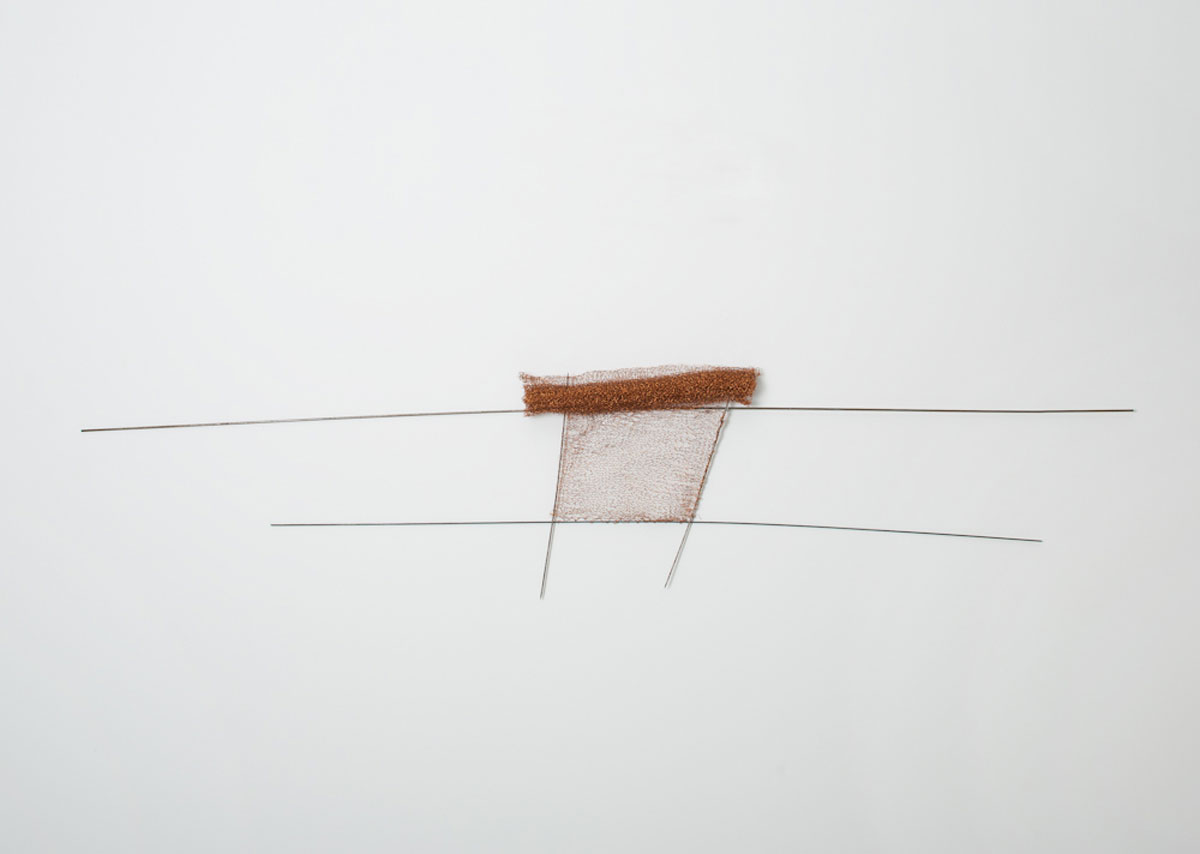
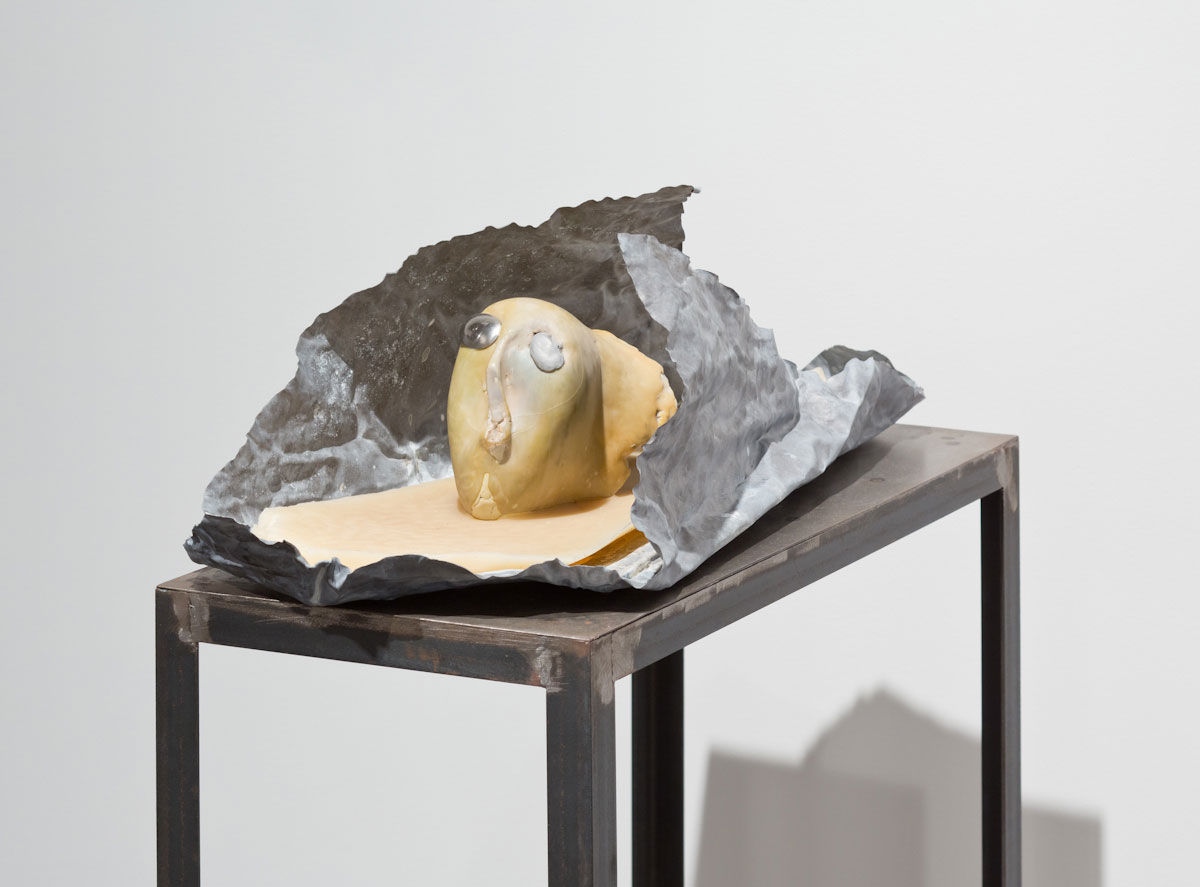
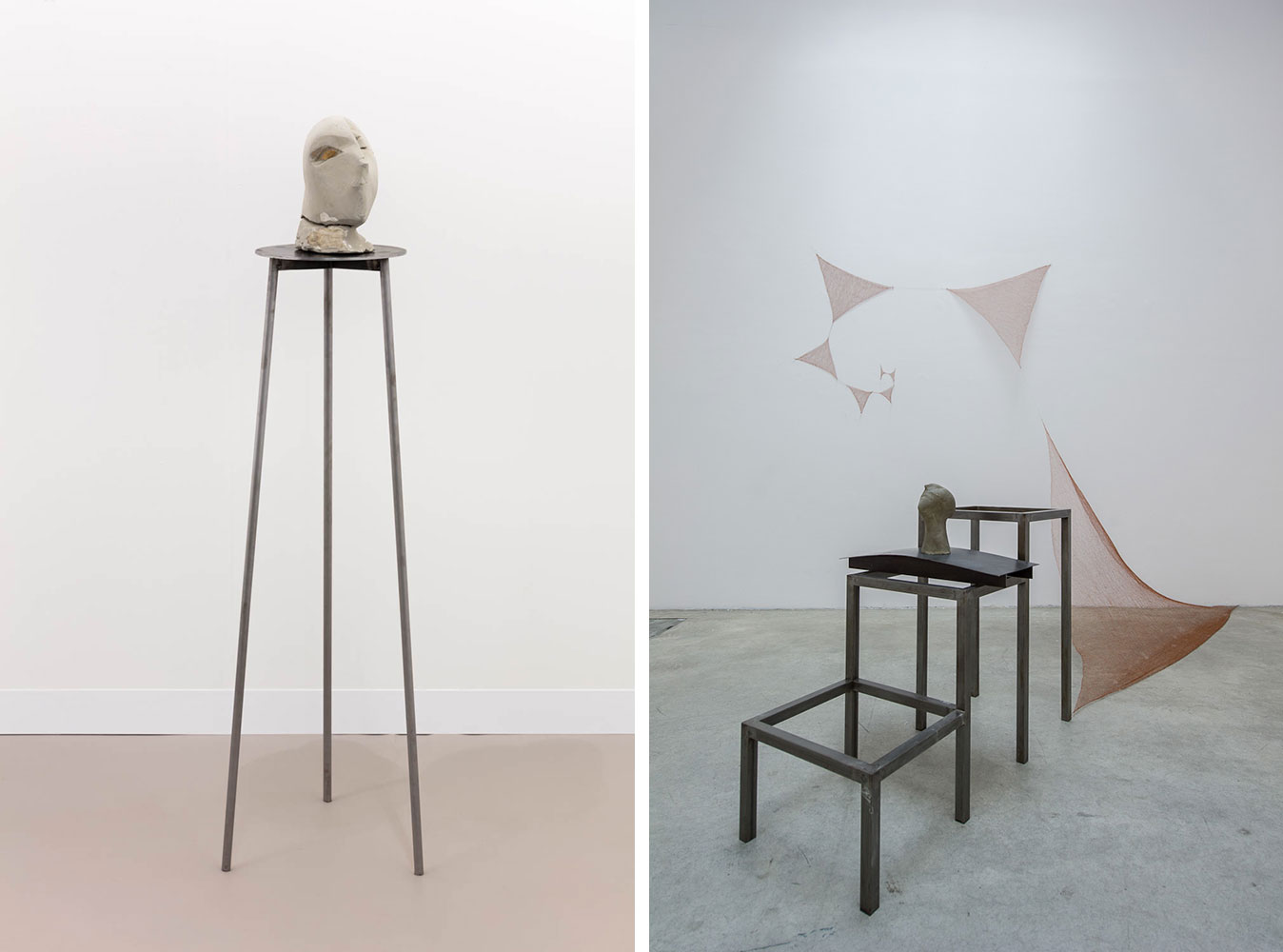
Right: Marisa Merz, Untitled, 1993, Copper wire, unfired clay, steel structure, Clay: 8 5/8 x 8 5/8 x 5 7/8 inches (22 x 22 x 15 cm), Metal base: 31 1/2 x 17 5/8 x 44 1/8 inches (80 x 45 x 112 cm), Copper spiral: 123 5/8 x 126 inches (314 x 320 cm), © Marisa Merz, Courtesy the artist and Gladstone Gallery
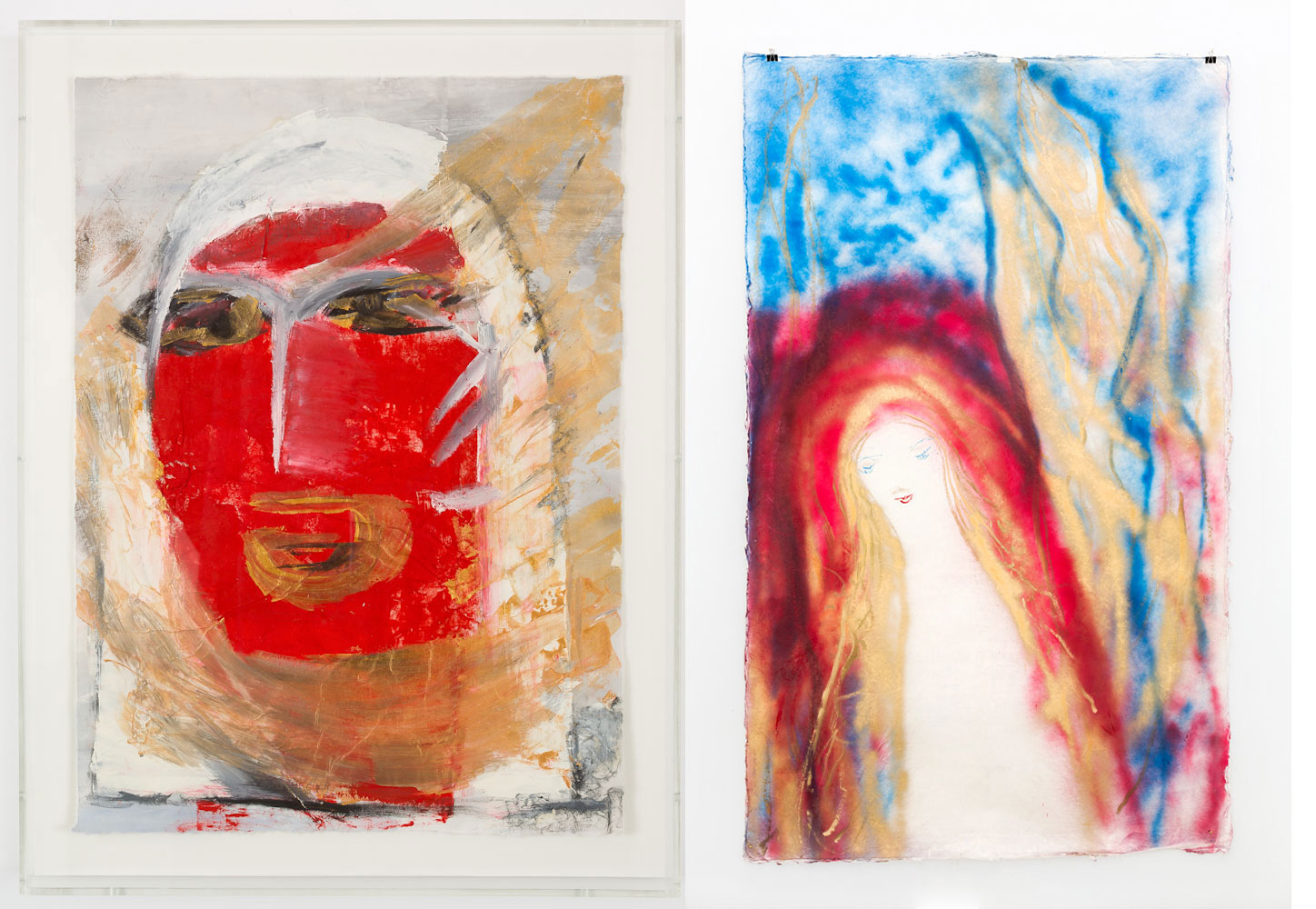
Right: Marisa Merz, Untitled, 2016, Enamel, pastel, and metallic paint on rice paper, 99 1/2 x 59 1/8 inches (252 x 150 cm), © Marisa Merz, Courtesy the artist and Gladstone Gallery
